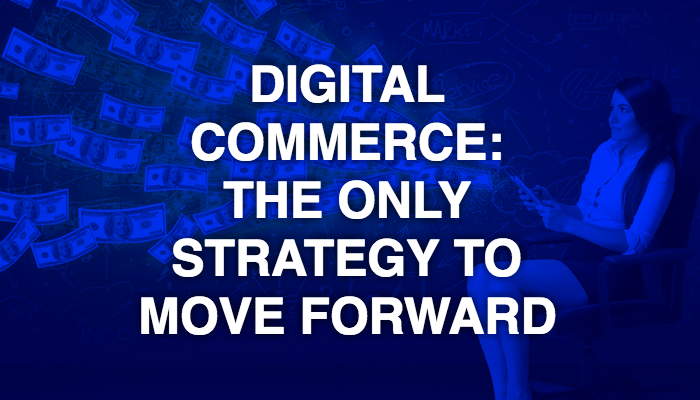
In today’s business world, it is uncommon to witness two extremes happening simultaneously. On one hand, Amazon, an online venture, buys Whole Foods Market and on the other hand, Walmart, a brick and mortar store, buys Bonobos - an online retailer. However, as you dig dipper, you would know that digital commerce is the force in action here.
The retail store affair is not new to Amazon. It has been testing waters since August 2007 with the launch of Amazon Fresh. It expanded its experiment with Amazon Go later. Amazon is eyeing big with Whole Foods Market this time. Fresh grocery is a category where consumers’ expenditure is very high. What is particularly important to note about this category of expenditure is that it hasn't yet been disrupted by digital commerce. However, Amazon is trying to do exactly that. A recent study from the Food Marketing Institute and Nielsen highlights that the U.S. grocery sector has potential to grow five-folds in the coming decade. If you want to cater to this growth, then there is a limit on the number of shops you could open. It makes sense to utilize the perfected processes of the retail management and deliver it online through digital commerce wisdom acquired and underscored by the AI technology. Here, the prime focus would be on scaling up your perfected retail management with digital technologies while improving the overall buying experience of the consumers.
Walmart, which is popular in non-urban areas of the U.S., is trying to weld its offline retail presence with Bonobos' strategy of applying online selling ethos to retail stores while maintaining growing product portfolio and sustained northward growth. Bonobos, which started as a simple chino pants online retailer, moved on to add different men apparel offerings and opening retail stores. However, they have very skillfully maintained their digital commerce experiences for purchases that include user-friendly shipping and return policies or labeling its service agents as ninjas. If Walmart wishes to fight Amazon, then it must understand how digital commerce operates. And, this agreed acquisition might help Walmart with required cultural and technical mindset transformation.
In today's world, it really doesn't matter whether you started as a pure brick and mortar store or a vanilla online store. Eventually to survive, you have to resort to digital commerce which involves applying technology to build experiences for your consumers that will diminish the gap between online and offline buying.
The key to win market share and customers lies in the convergence of offline and online digital commerce to meet the expectations. It is observed that enterprises that deliver seamless integrated experiences earn greater market share.
How do you create seamless integrated experience for digital commerce?
A very useful approach for it could be summed up as below:
- Build on data
Make use of data gathered through various sources - invoices, CCTV footages, social media conversations, responses to your marketing campaigns etc. Apply analytics and intelligence to know,- What are the important factors that shape your customers' experience in the online and offline world?
- Are there any unaddressed needs? If yes, prioritize the actions to build solutions and experiences around these unaddressed needs.
- Create unified experience across your touch points
Digital commerce enterprises will have different touch points with their customers. They should be perceived as the same organization across these interfaces. It can start with the same product pricing, discount options, payment methods etc. across various retails and digital storefronts. It can be extended to look and feel, imagery, promotional messages going forward. When your digital customers walk-in to your retail outlet, they should quickly identify themselves with the brand. And when your retail customers log on to your web storefront, they should get the same feel and treatment as they get in your retail stores. New-age technology such as mixed reality (AR and VR combined) comes handy to build this kind of unified experience. - Personalize experience with mobile technologies
A mobile device is something that is always with the customers, irrespective of the interface that they use to interact with your enterprise. Make use of it to take the experience one level deeper. Enterprises can utilize iBeacon, for example, to send much targeted information about any product being displayed on the shelf to a mobile device in the hand of a prospective customer walking through the aisle. If this prospect responds to this message positively, then you can build his in-store behavior to target more specific content on the online storefront. Same can be applied vice-a-versa. There are many more possibilities where mobility can be used in a very interactive way to engage your customers.
This is a bird's eye view of how enterprises should go about implementing digital commerce successfully. If you have any queries or wish to know more about digital commerce services, feel free to contact me on devendra.deshmukh <at> e-zest.com or post your comments in the section below.





